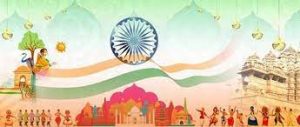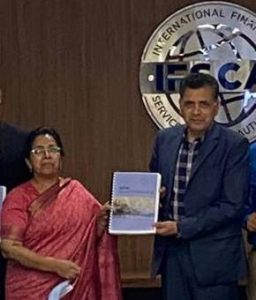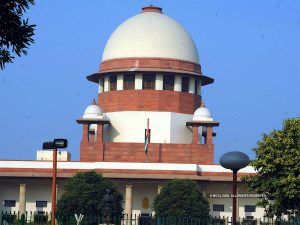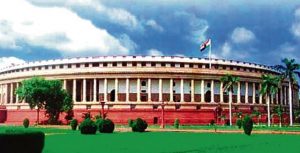Today Current Affairs: 7th December 2021 for UPSC IAS exams, State PSC exams, SSC CGL, State SSC, RRB, Railways, Banking Exam & IBPS, etc
Table of Contents
Culture Mapping Of 80 Villages:

Culture mapping of 80 villages associated with noted personalities in history, in particular the freedom movement, unique crafts and festivals has been started as a pilot project, Culture Ministry officials said.
- The project is expected to be completed this financial year.
- From Sempore in Kashmir to Kanjirapally in Kerala, villages with a connection to the freedom movement as well as those with their own art practices have been selected for the project, being conducted by the Indira Gandhi National Centre for the Arts (IGNCA).
- The project would lead to a “national register and interactive database of artists and art practices from the villages of India”. Each artist would be given a unique ID and an e-commerce platform set up.
- The work under the mission involves coordinating the data collection through ground and field surveys conducted on the basis of detailed formats and questionnaires, mobile application, interactive web-portal and an over-the-top (OTT) platform to showcase ethnographic documentaries/ cultural events/ festival/ melas etc. of villages.
- On the list of villages selected is Sempore or Pandrenthan in Budgam district of Jammu and Kashmir that is associated with 14th Century mystic Lal Ded or Lalleshwari.
- From Ladakh, the pilot project included Choglamsar and Wanla villages, known for wood carving.
- Khatkar Kalan village in Punjab, which has a memorial of Bhagat Singh; Reni village of Uttarakhand, where the Chipko movement started; and Kathputli Colony in Delhi, known for the “migrant kathputli artists”, are also on the list.
- Two villages in Tamil Nadu — Ettayapuram (the birthplace of poet Subramania Bharathi) and Thiruchigadi (a village of “women potters”) — are also on the list.
Police Reforms:

The Parliamentary Standing Committee on Home Affairs has urged the State Governments to follow the crime analytics model of Delhi Police in preventing street crimes against women through crime mapping and identification of hotspots for reinforced action.
- Communicating this to the Chief Secretaries of the States and Union Territories, the Union Home Ministry said the Crime Mapping Analytics and Productive System and related tools were deployed on the Crime and Criminal Tracking Network & Systems (CCTNS).
- As part of the initiatives to strengthen the capacity to deal with cases of crimes against women, it was recommended that the SOP on registration of FIRs should include guidelines to police to record reasons for delay in reporting of crimes by the complainants to the police.
- A provision was made for recording this statement in the FIRs on the CCTNS.
- The States and Union Territories were told to widely circulate the BPR&D’s handbooks on ‘Women’s Safety & Security’ and ‘First respondents and Investigators’ to police personnel, and include the guidelines in the training modules.
- In Tamil Nadu, which leads the nation in the concept of all-woman police station, Director-General of Police/Chennai Police Commissioner Shankar Jiwal says police were sensitised to the need for taking proactive measures to avert crime against women and children and also to prosecute offenders in such cases expeditiously.
Kala Sanskriti Vikas Yojna:

The Ministry of Culture has launched a Scheme of Financial Assistance for the Development of Buddhist/Tibetan Culture and Art under “Kala Sanskriti Vikas Yojna (KSVY)”.
- Under this scheme, financial assistance is provided to the voluntary Buddhist and Tibetan Organizations including Monasteries engaged in the propagation and scientific development of Buddhist/ Tibetan Culture and tradition, located in any part of the country.
- The quantum of funding is Rs.30 lakhs per year for an organization.
- KSVY is an umbrella scheme under the Ministry of Culture for the promotion of art and culture in the country. It is a central sector scheme.
- The ministry implements many schemes under KSVY, where the grants are sanctioned/approved for holding programs/activities.
- Scheme of Financial Assistance for Promotion of Art and Culture.
- Scheme of Financial Assistance for Creation of Cultural Infrastructure.
- Scheme for Safeguarding the Intangible Cultural Heritage, which aims to promote the 13 intangible cultural heritage of India, recognised by the United Nations Educational, Scientific and Cultural Organization (UNESCO).
Ship Acquisition, Financing And Leasing (SAFAL):

The report titled Ship Acquisition, Financing and Leasing (SAFAL) was submitted by the Committee for Development of Avenues for Ship Acquisition, Financing and Leasing to the International Financial Services Centres Authority (IFSCA).
- The Committee was constituted by IFSCA in June 2021 with representatives from the Government of India, Gujarat Maritime Board, industry and finance experts, and academicians.
- Objective: Focus remained on enabling cost-effective and competitive delivery of shipping services on ships owned and leased from India-offshore IFSC which is on par with overseas competitors.
- Observations of the Committee:
- Net Importer of Shipping Services: Despite having a large coastline, growing domestic market and international seaborne trade, deep-rooted maritime traditions, and skilled seafarers, India continues to have a smaller share in the international shipping sector, thus becoming a net importer of shipping services especially ship finance.
- Required Changes: It has presented the critical and necessary changes required to bring this greenfield venture to India IFSC.These cover legal and regulatory domains, direct and indirect taxes, ship finance, and ease of doing business drawing upon global best practices.
- Imparting Brand Value: It finds that the time is opportune for imparting a brand value to Indian-flagged vessels.
- This can be done by carving out a share in global cross trades, securing gainful transactions for India’s marketplace, promoting decarbonization and greening of the blue oceans, and leveraging India-IFSC Maritime for achieving the Maritime India Vision 2030 and beyond.
- Maritime India Vision 2030 is a ten-year blueprint for the maritime sector which was released by the Prime Minister of India at the Maritime India Summit in November 2020.
- It will supersede the Sagarmala initiative and aims to boost waterways, give a fillip to the shipbuilding industry and encourage cruise tourism in India.
Poshan Or Nutrition Tracker:

The Ministry of Women and Child Development has spent over ₹1,000 crore on its Poshan or Nutrition Tracker, which records real-time data on malnourished and ‘severe acute malnourished’ children in each anganwadi. But four years since its launch, the Government is yet to make the data public.
- Government officials have cited privacy concerns as a reason for keeping the data under lock and key but experts say it can easily be anonymised as is the case with data for several other government schemes.
About the Poshan Tracker:
- The Poshan Tracker, known as the ICDS-CAS (Integrated Child Development Services-Common Application Software) in its earlier avatar, was set up with the aim of tracking and improving various services delivered at anganwadis and to ensure nutritional management of beneficiaries.
- This real-time monitoring system is one of the key pillars of Poshan Abhiyan or Nutrition Mission approved by the Union Cabinet in November 2017 with a financial outlay of ₹9,000 crore for three years.
About Poshan Abhiyaan:
- The programme seeks to improve nutritional outcomes for children, pregnant women and lactating mothers.
Launched in 2018 with specific targets to be achieved by 2022. - It aims to reduce:
- Stunting and wasting by 2% a year (total 6% until 2022) among children.
- Anaemia by 3% a year (total 9%) among children, adolescent girls and pregnant women and lactating mothers.
- The target of the mission is to bring down stunting among children in the age group 0-6 years from 38.4% to 25% by 2022.
- More than a third of the children under five face stunting and wasting and 40% aged between one and four are anaemic. Over 50% of pregnant and other women were found to be anaemic, said the National Family Health Survey 4 released in 2016.
CSR Funds For Monuments:

A private member’s Bill has been introduced in Parliament mandating that 25% of all corporate social responsibility (CSR) funds be used for restoration, management and maintenance of ancient monuments and archaeological sites.
- While some members supported the Companies (Amendment) Bill, 2019, few others disagreed with the mandatory provision.
- The Archaeological Survey of India (ASI), the National Monuments Authority (NMA) and other agencies tasked with looking after monuments lacked the resources needed for the upkeep of the sites.
- The aim of CSR is to benefit local communities. Therefore, the funds should not be diverted.
- Corporate Social Responsibility is the integration of socially beneficial programs and practices into a corporation’s business model and culture.
The High Court And Supreme Court Judges Amendment Bill 2021:

The High Court and Supreme Court Judges (Salaries and Conditions of Service) Amendment Bill, 2021 was introduced in Lok Sabha.
- The Bill seeks to amend the High Court Judges (Salaries and Conditions of Service) Act, 1954, and the Supreme Court Judges (Salaries and Conditions of Service) Act, 1958.
About the Bill:
- It seeks to bring clarity on when Supreme Court and High Court judges are entitled to an additional quantum of pension or family pension on attaining a certain age.
- The Bill clarifies that the increase in pension of retired judges which come after attaining a certain age shall be implemented from the first day of the month in which they complete the age specified and not from the first day of his entering the age specified.
Current Provisions:
- The High Court Judges (Salaries and Conditions of Service) Act, 1954, and the Supreme Court Judges (Salaries and Conditions of Service) Act, 1958 regulate the salaries and conditions of service of the judges of High Courts and the Supreme Court of India.
- Through the High Court and Supreme Court Judges (Salaries and Conditions of Service) Amendment Act, 2009, section 16B and section 17B were respectively inserted (in the 1954 Act and 1958 Act).
- The 2009 act aims to provide that every retired Judge or after his death, the family will be entitled to an additional quantum of pension or family pension in accordance with the scale specified therein.
- Accordingly, the additional quantum of pension to retired Judges of the High Court and Supreme Court is being sanctioned on completing the age of 80 years, 85 years, 90 years, 95 years and 100 years, as the case may be.
- The additional quantum increases with age (from 20% to 100% of the pension or family pension).
Rules To Admit Questions: Parliament

A question raised by a Member of Parliament was disallowed “because of national interest.
- Also, over the last few sessions, MPs have often alleged their questions have been disallowed.
- In both Houses, elected members enjoy the right to seek information from various ministries and departments in the form of starred questions, unstarred questions, short notice questions and questions to private members.
- The first hour of every sitting is usually devoted to asking and answering questions in both Houses, and this is referred to as the ‘Question Hour’.
- The Rajya Sabha Chairman or the Lok Sabha Speaker has the authority to decide whether a question or a part is or is not admissible under the norms of the House, and disallow any question or a part.
Rules to Admit Questions:
In Rajya Sabha:
- The admissibility of questions in Rajya Sabha is governed by Rules 47-50 of the Rules of Procedure and Conduct of Business in the Council of States.
- Among various norms, the question “shall be pointed, specific and confined to one issue only”.
In Lok Sabha:
- In Lok Sabha, once the notice for questions is received, ballots determine priority.
- The questions are examined for admissibility under Rules 41-44 of the Rules of Procedure and Conduct of Business in Lok Sabha.
- In Lok Sabha, questions that are not admitted include: those that are repetitive or have been answered previously; and matters that are pending for judgment before any court of law or under consideration before a Parliamentary Committee.
Categories of Questions:
Starred Question:
- The member desires an oral answer from the minister. Such a question is distinguished by the MP with an asterisk. The answer can also be followed by supplementary questions from members.
UnStarred Question:
- The MP seeks a written answer, which is deemed to be laid on the table of the House by the concerned minister.
Short Notice Question:
- These are on an urgent matter of public importance, and an oral answer is sought. For asking such a question, a notice of less than 10 days is prescribed as the minimum period.
Question to Private Member:
- A question can be addressed to a private member under Rule 40 of Lok Sabha’s Rules of Procedure, or under Rule 48 of Rajya Sabha’s Rules, provided that the question deals with a subject relating to some Bill, resolution or other matter for which that member is responsible.
Private Members Bill:

Rajya Sabha reserved its decision to allow the introduction of a Private Member’s Bill to amend the Preamble to the Constitution.
- The Bill seeks to change the words in the Preamble “EQUALITY of status and of opportunity” to “EQUALITY of status and of opportunity to be born, to be fed, to be educated, to get a job and to be treated with dignity”
- Any Member of Parliament (MP) who is not a minister is referred to as a private member.
- Its drafting is the responsibility of the member concerned. Its introduction in the House requires one month’s notice.
- The government bills\public bills can be introduced and discussed on any day, private member’s bills can be introduced and discussed only on Fridays.
- In case of multiple Bills, a ballot system is used to decide the sequence of bills for introduction.
- The Parliamentary Committee on Private Member’s Bills and Resolutions goes through all such Bills and classifies them based on their urgency and importance.
- Its rejection by the House has no implication on the parliamentary confidence in the government or its resignation.
- Upon conclusion of the discussion, the member piloting the bill can either withdraw it on the request of the minister concerned, or he may choose to press ahead with its passage.
Previous Private Bills:
- The last time a private member’s bill was passed by both Houses was in 1970.
- It was the Supreme Court (Enlargement of Criminal Appellate Jurisdiction) Bill, 1968.
- 14 private member’s bills — five of which were introduced in Rajya Sabha — have become law so far. Some other private member bills that have become laws include-
- Proceedings of Legislature (Protection of Publication) Bill, 1956, in the Lok Sabha.
- The Salaries and Allowances of Members of Parliament (Amendment) Bill, 1964, introduced in the Lok Sabha.
- The Indian Penal Code (Amendment) Bill, 1967 introduced in the Rajya Sabha.
Greater Tipraland: Tripura

Several tribal outfits in Tripura have joined hands to push their demand for a separate state, Greater Tipraland for indigenous communities in the region.
- Among the political parties that have come together for the cause are TIPRA Motha (Tipraha Indigenous Progressive Regional Alliance) and IPFT (Indigenous People’s Front of Tripura).
- The parties are demanding a separate state of ‘Greater Tipraland’ for the indigenous communities of the north-eastern state.
- They want the Centre to carve out the separate state under Article 2 and 3 of the Constitution.
- Among the 19 notified Scheduled Tribes in Tripura, Tripuris (aka Tipra and Tiprasas) are the largest.
- According to the 2011 census, there are at least 5.92 lakh Tripuris in the state, followed by Bru or Reang (1.88 lakh) and Jamatias (83,000).
- The churn in the state’s politics with the rise of TIPRA Motha and the Assembly polls due in early 2023 are the two major reasons behind the development.
Historical Background:
- Tripura was a kingdom ruled by the Manikya dynasty from the late 13th century until the signing of the Instrument of Accession with the Indian government in 1949.
- The demand stems from the anxiety of the indigenous communities in connection with the change in the demographics of the state, which has reduced them to a minority.
- It happened due to the displacement of Bengalis from the erstwhile East Pakistan between 1947 and 1971.
- From 63.77% in 1881, the population of the tribals in Tripura was down to 31.80% by 2011.
- In the intervening decades, ethnic conflict and insurgency gripped the state, which shares a nearly 860-km long boundary with Bangladesh.
- The joint forum has also pointed out that the indigenous people have not only been reduced to a minority, but have also been dislodged from land reserved for them by the penultimate king of the Manikya dynasty Bir Bikram Kishore Debbarman.
Initiatives to Address the Issue:
- The Tripura Tribal Areas Autonomous District Council (TTADC) was formed under the sixth schedule of the Constitution in 1985 to ensure development and secure the rights and cultural heritage of the tribal communities.
- ‘Greater Tipraland’ envisages a situation in which the entire TTADC area will be a separate state. It also proposes dedicated bodies to secure the rights of the Tripuris and other aboriginal communities living outside Tripura.
- The TTADC, which has legislative and executive powers, covers nearly two-third of the state’s geographical area.
- The council comprises 30 members of which 28 are elected while two are nominated by the Governor.
- Reservation: Also, out of the 60 Assembly seats in the state, 20 are reserved for Scheduled Tribes.




